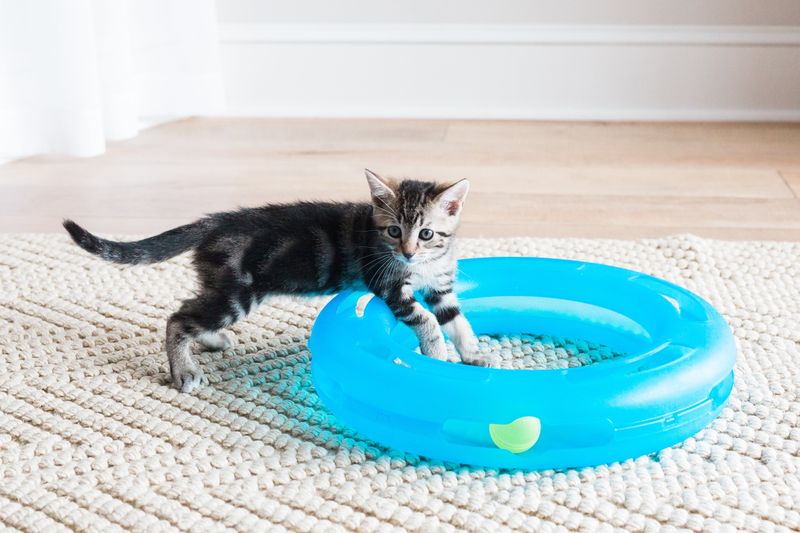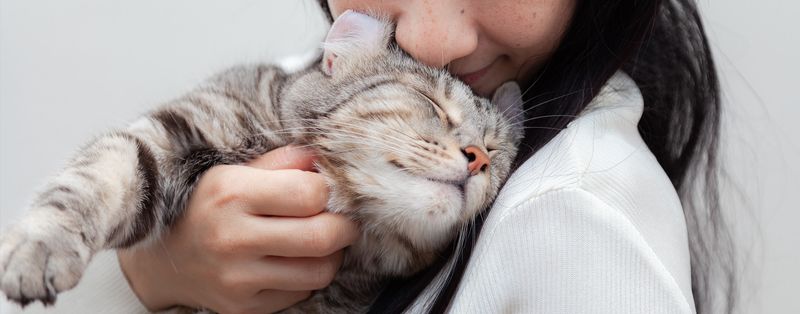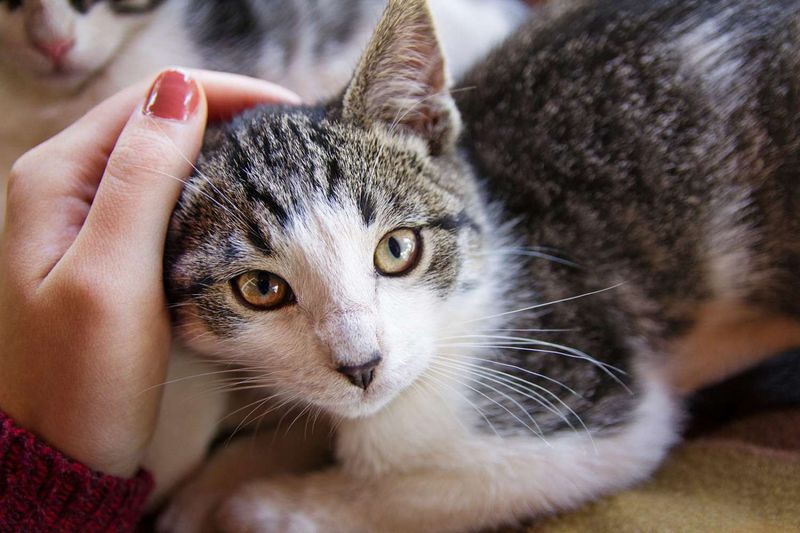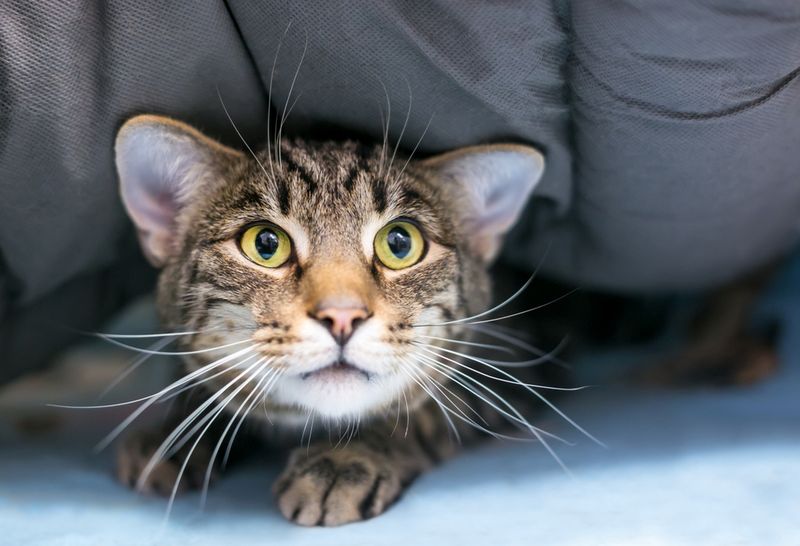📖 Table of Content:
- 1. Respect Their Personal Space
- 2. Master the Slow Blink Communication
- 3. Engage Through Interactive Play
- 4. Offer High-Value Treats Strategically
- 5. Become a Consistent Caretaker
- 6. Speak Their Language With Scent
- 1. Forcing Physical Contact
- 2. Skipping Proper Introductions
- 3. Using Punishment for Behavior Issues
- 4. Overlooking Health Problems
- 5. Making Direct Eye Contact
- 6. Creating a Chaotic Environment
Cats are often misunderstood, with many perceiving them as distant or aloof. In reality, most cats simply require a specific approach to form meaningful connections. By recognizing their individual ways of communicating and respecting their boundaries, a cat can transform from distant to deeply affectionate.
Building a strong bond with a cat takes time and patience, as each feline has its own personality and preferences. Whether a cat is naturally shy or seems emotionally distant, understanding their needs is key to creating a trusting relationship. Small changes in how interactions are approached can make a world of difference in fostering closeness.
For anyone seeking to connect with a cat, understanding common mistakes is just as important as knowing the right strategies. By observing body language and taking cues from their behavior, a more harmonious relationship can be formed. These insights will help guide anyone through the process of creating a stronger, more loving bond with their feline companion.
1. Respect Their Personal Space
Cats value their territory and need control over social interactions. Unlike dogs, most felines prefer approaching you on their terms rather than being pursued or cornered for affection.
Create designated safe zones where your cat can retreat undisturbed. These might include elevated perches, hiding spots, or quiet corners away from household traffic. When your cat uses these spaces, resist the urge to intrude.
The magic happens when you allow them autonomy. Many cat owners notice that once they stop chasing their pet for cuddles, the cat mysteriously appears on their lap seeking attention.
2. Master the Slow Blink Communication
The slow blink is a secret handshake in the feline world. When cats deliberately close their eyes in your presence, they’re displaying remarkable trust since closing eyes makes them temporarily vulnerable.
Try this technique yourself: make eye contact with your cat from a comfortable distance, then slowly close your eyes for a second or two before reopening them. Repeat this gentle gesture a few times.
Many cats respond by returning the slow blink or gradually approaching. This quiet conversation tells your cat, “I’m not a threat” and “I trust you enough to be vulnerable,” creating a foundation for deeper connection.
3. Engage Through Interactive Play
Regular play sessions tap into your cat’s natural hunting instincts while building positive associations with you. Wand toys create distance for shy cats while still fostering interaction. Fishing-rod style toys with feathers or fabric lures mimic prey movements that cats find irresistible.
Schedule short play sessions (10-15 minutes) twice daily, ideally before meals. This routine mimics a cat’s natural hunt-eat-groom-sleep cycle and releases pent-up energy.
The shared joy of play builds trust over time. Many formerly standoffish cats transform during play, revealing playful personalities and gradually transferring their positive feelings about playtime to their human playmates.
4. Offer High-Value Treats Strategically
Food speaks volumes in the feline language of love. Reserved cats often warm up faster when you become associated with their favorite delicacies. Small amounts of tuna, freeze-dried chicken, or commercial treats formulated with irresistible ingredients can work wonders.
Start by placing treats near you without direct interaction, gradually decreasing the distance over days or weeks. Eventually, offer treats from your hand, then progress to gentle pets while treating.
This positive reinforcement creates a powerful connection in your cat’s mind: Human = Good Things. Keep sessions brief and respect boundaries if your cat seems uncomfortable taking food directly from you.
5. Become a Consistent Caretaker
Reliability forms the cornerstone of feline trust. Cats thrive on predictable routines for meals, playtime, and attention. When these needs are met consistently, even the most cautious cats gradually let down their guard.
Establish and maintain a daily schedule that your cat can count on. Feed at the same times, clean the litter box regularly, and provide structured interaction periods. This consistency creates security.
The transformation happens subtly – your formerly skittish cat begins waiting for you at feeding time, greeting you at the door, or seeking you out during your usual play hour. These small gestures signal growing trust in your role as provider and protector.
6. Speak Their Language With Scent
Cats navigate their world primarily through smell, making scent a powerful bonding tool. Their facial glands release pheromones that mark objects (and people) as safe and familiar.
Allow your cat to mark you naturally by accepting head bumps and cheek rubs. Wearing the same scent (perfume or deodorant) creates a consistent olfactory signature your cat will recognize.
For extremely shy cats, try exchanging scents before physical contact. Place a clean cloth near where your cat sleeps, then later keep it near you to transfer your scent. Some cat behaviorists even recommend gently rubbing a soft cloth on your cat’s cheeks, then applying that cloth to your hands before interaction.
1. Forcing Physical Contact
Grabbing, restraining, or pursuing a reluctant cat for hugs and cuddles creates fear instead of affection. This common mistake violates their autonomy and teaches them that humans are unpredictable threats rather than trusted companions.
Many well-meaning cat parents mistake tolerance for enjoyment. A cat who freezes during unwanted petting isn’t enjoying it—they’re enduring it. Watch for subtle signs of discomfort: flicking tail, flattened ears, or dilated pupils.
Instead, always invite interaction and respect refusal. Extend a finger for your cat to sniff, then if they rub against you, offer brief pets. Stop before they show signs of overstimulation, leaving them wanting more rather than feeling trapped.
2. Skipping Proper Introductions
Rushing a new cat’s integration into your home creates lasting anxiety and mistrust. Cats need time to adjust to new environments before they can form human bonds.
Set up a separate sanctuary room for new cats with all essentials: food, water, litter box, bed, and toys. Spend quiet time in this room without forcing interaction. Read aloud or work on your laptop to help them acclimate to your presence.
Gradually expand territory access as confidence grows. Many adoption failures happen because owners expect immediate affection from overwhelmed cats. Remember: patience during the first weeks builds a foundation for years of companionship. Some cats need months to fully settle into new homes.
3. Using Punishment for Behavior Issues
Spray bottles, loud noises, or physical discipline destroy trust and create fear-based relationships. Cats don’t connect punishment with specific behaviors—they simply learn to fear you.
Scratching furniture or counter-jumping are normal feline behaviors needing redirection, not punishment. Provide appropriate scratching surfaces and make forbidden areas unappealing with temporary deterrents like aluminum foil or double-sided tape.
Focus on positive reinforcement when your cat makes good choices. Reward using appropriate scratching posts or staying off counters with treats, play, or affection. This approach preserves trust while guiding behavior. Remember that cats respond to environmental management and rewards, not discipline.
4. Overlooking Health Problems
Sudden withdrawal or personality changes often signal medical issues rather than emotional distance. Pain, discomfort, or illness can dramatically alter how your cat interacts with you and their environment.
Common health problems causing behavioral changes include dental disease, arthritis, urinary tract infections, and hyperthyroidism. Cats instinctively hide weakness, making subtle changes in sociability important warning signs.
Schedule a veterinary check-up if your formerly friendly cat becomes withdrawn or irritable. Many owners report miraculous personality transformations after addressing underlying health issues. Your “angry” or “distant” cat might simply be a cat in pain who can’t communicate their distress any other way.
5. Making Direct Eye Contact
Extended direct eye contact reads as threatening in cat language. While humans associate eye contact with honesty and connection, cats interpret it as confrontational or predatory behavior.
Notice how cats in peaceful households rarely stare directly at each other. When they do lock eyes, it often precedes conflict. This fundamental communication difference creates unintentional tension between well-meaning humans and their feline companions.
Adopt a cat-friendly gaze pattern instead. Look at your cat with soft eyes, periodically blinking slowly or looking slightly away. This approach signals peaceful intentions and respects feline communication norms. Many cats become noticeably more relaxed around people who master this subtle skill.
6. Creating a Chaotic Environment
Unpredictable households with frequent loud noises, arguments, or constant activity overwhelm sensitive feline nervous systems. Cats thrive on predictability and moderate stimulation levels.
Common household chaos triggers include uncontrolled children, frequent visitors, renovation projects, or volatile relationships. Even seemingly minor disruptions like rearranging furniture or changing work schedules can impact sensitive cats.
Create stability by establishing quiet zones where your cat can retreat from overstimulation. Maintain consistent daily patterns when possible. During unavoidable disruptions like moving or home improvements, provide extra hiding spaces and maintain feeding routines. Many “antisocial” cats bloom in calmer environments with manageable stimulation levels.












